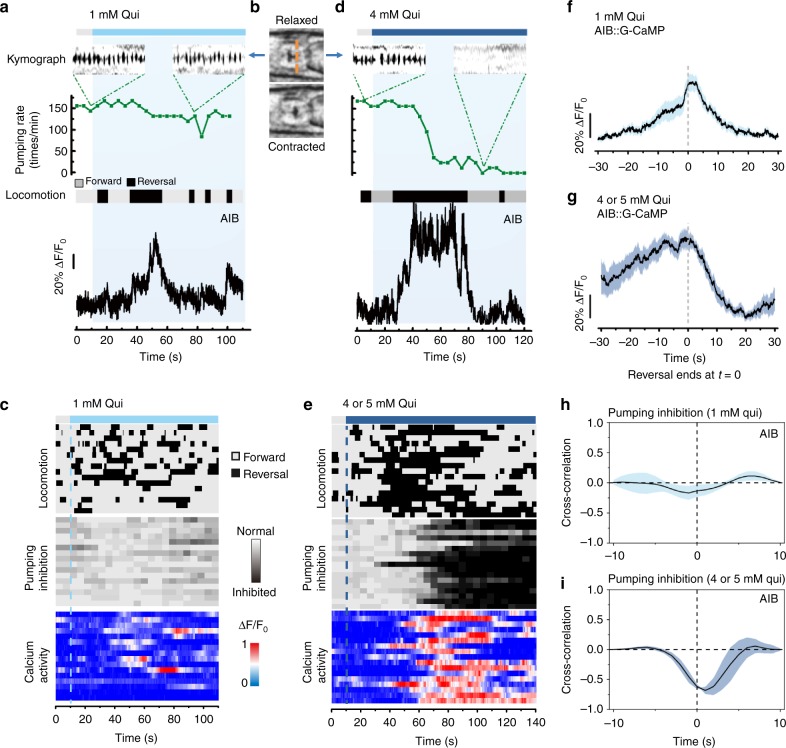Fig. 1.
Different strengths of quinine elicit different behavioral outputs: reversal initiation and feeding inhibition. a, b, d 1 mM quinine initiated frequent reversal, induced small and transient [Ca2+]i activities in AIB, but did not significantly suppress pumping rate. In contrast, 5 mM quinine-induced pumping suppression, reversal initiation and large, sustained [Ca2+]i elevations in AIB. Pumping rate and locomotion were assayed with the iCaN system in a freely behaving worm, while intracellular calcium transients from AIB were simultaneously imaged. The kymographs denote the pumping pulse of feeding in 5 s selected before and after the application of quinine. The grinder muscle moving from relaxed position to contracted position (b) and returning to relaxed position represents a pump, which is shown as a spike in the kymographs (a, d). Orange dash line (b) indicates the position selected for the kymographs. The ethograms describing the locomotion behavior were generated automatically from the worm’s posture and the direction of locomotion acquired by the iCaN system. c, e Locomotion, pumping behavior, and AIB calcium dynamics in response to low (c) and high (e) concentration of quinine in freely behaving worms. Traces are ordered according to the time of quinine application (dash lines). n ≥ 16 worms. f, g AIB calcium level exhibited an increase during reversals and a decrease at the end of reversals induced by both low (f) and high concentration (g) of quinine. n = 9 worms for high concentration and n = 12 worms for low concentration. h, i Cross-correlation analysis exhibited that AIB calcium activity correlates with pumping inhibition at high concentrations of quinine condition but not at low concentration. Shading around traces indicates error bars (s.e.m.). n ≥ 15 worms

